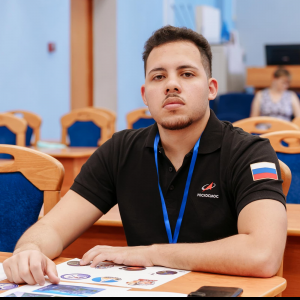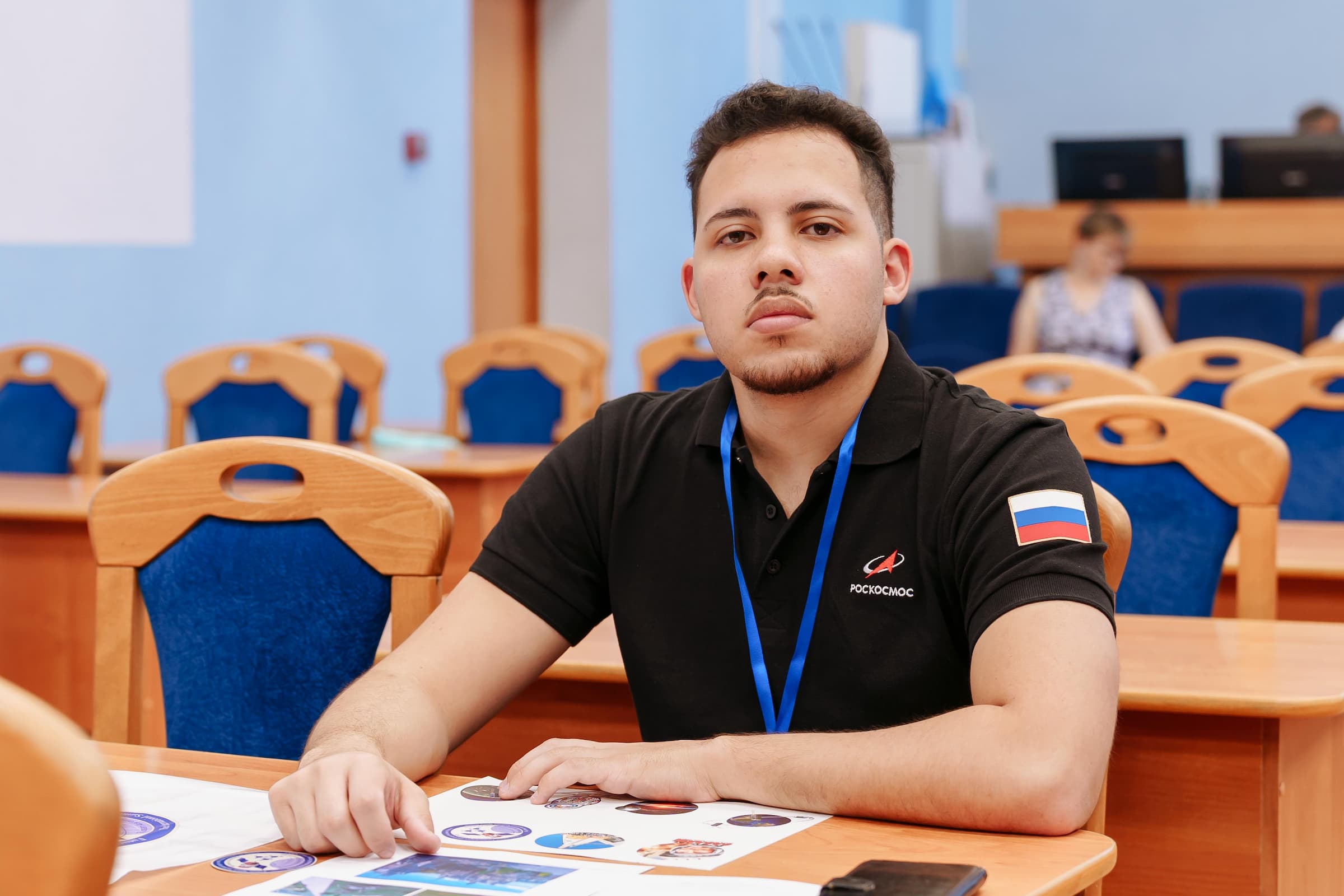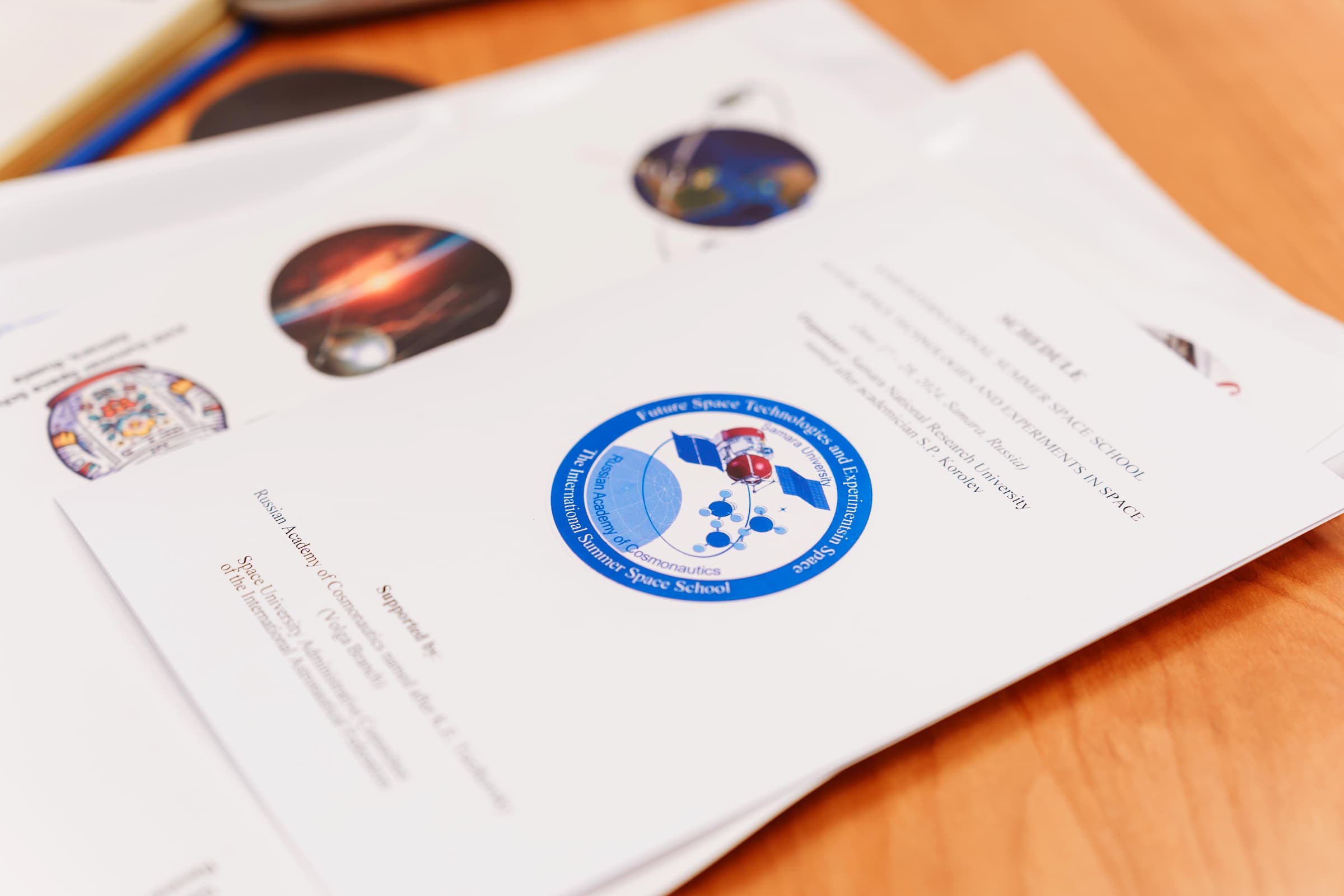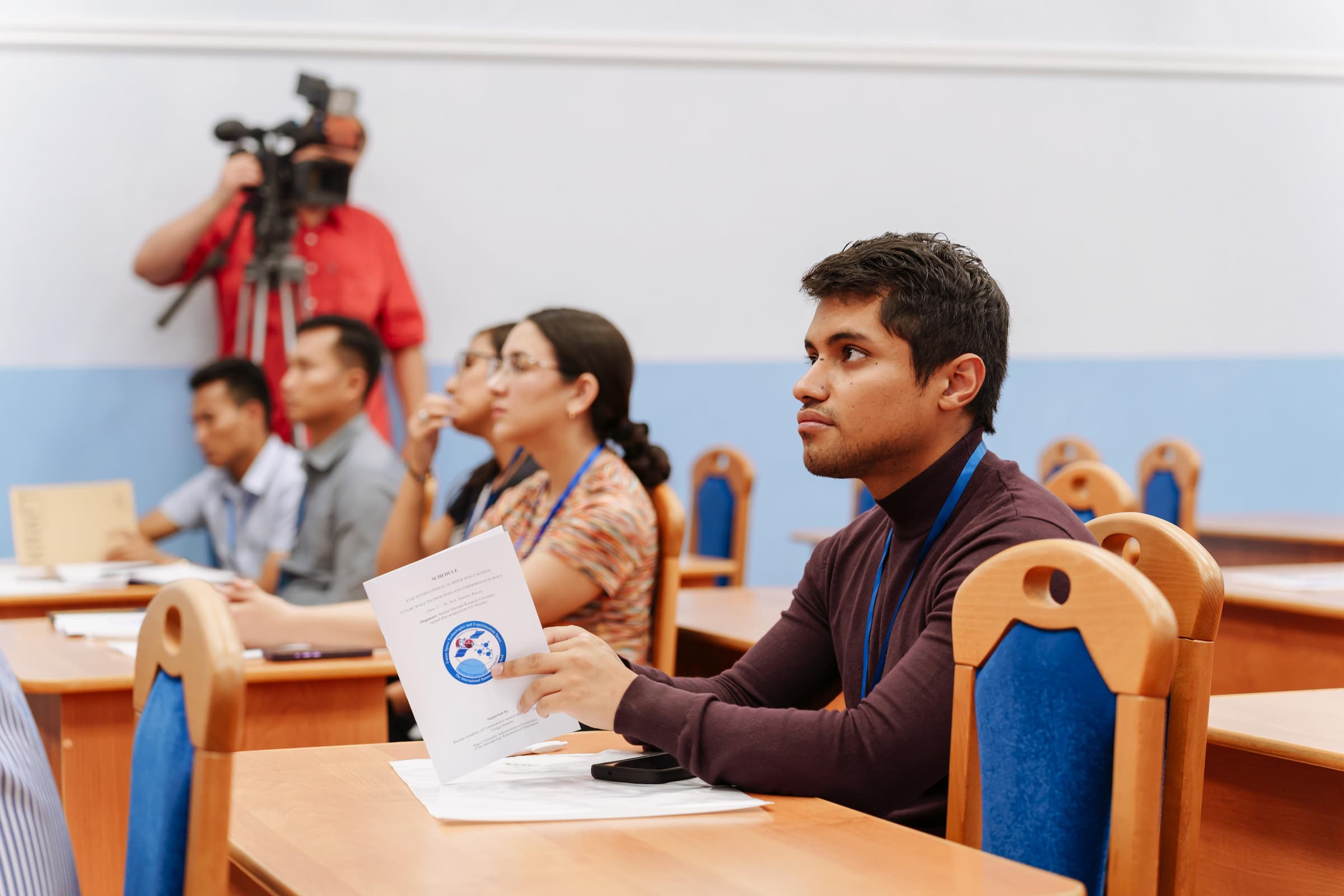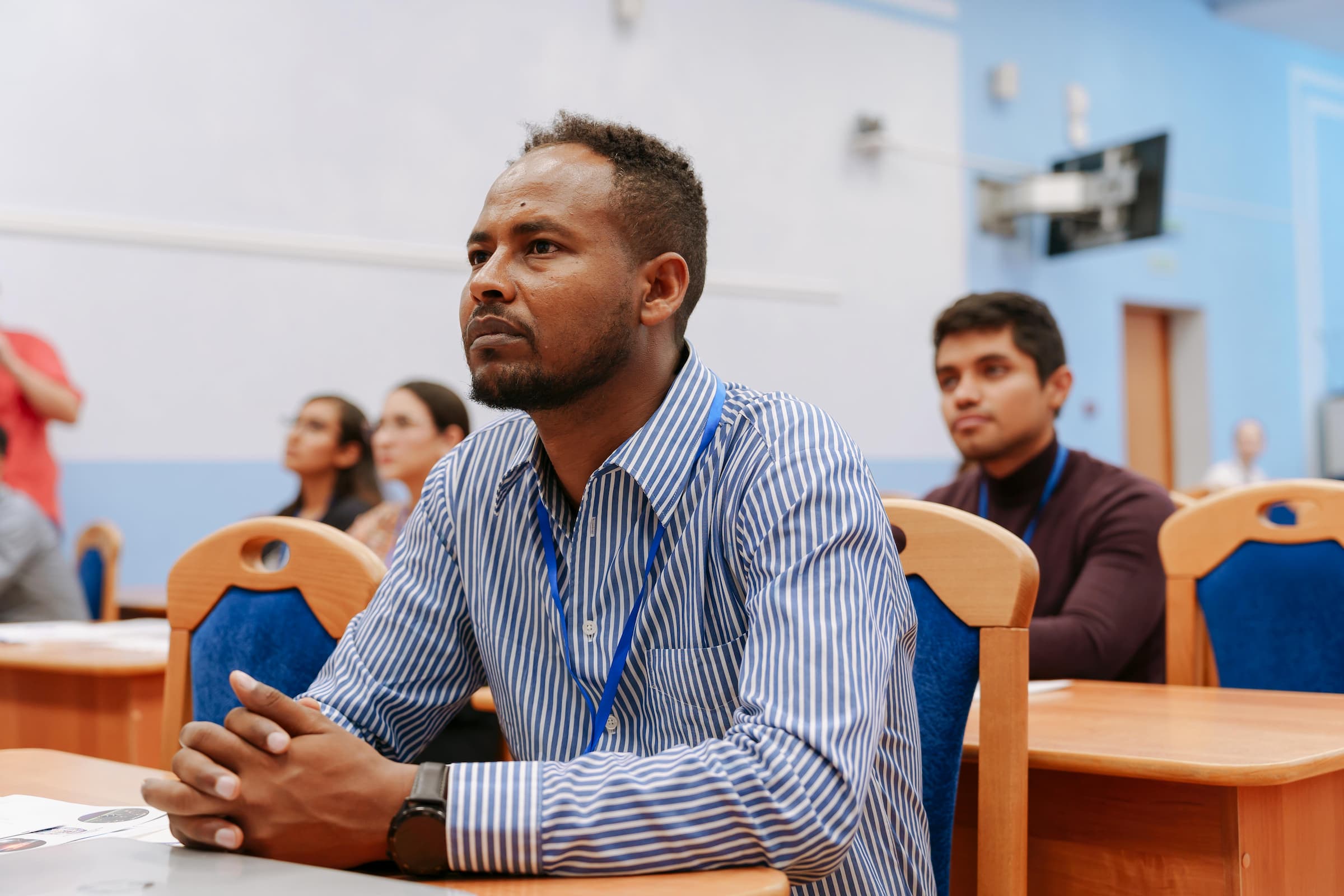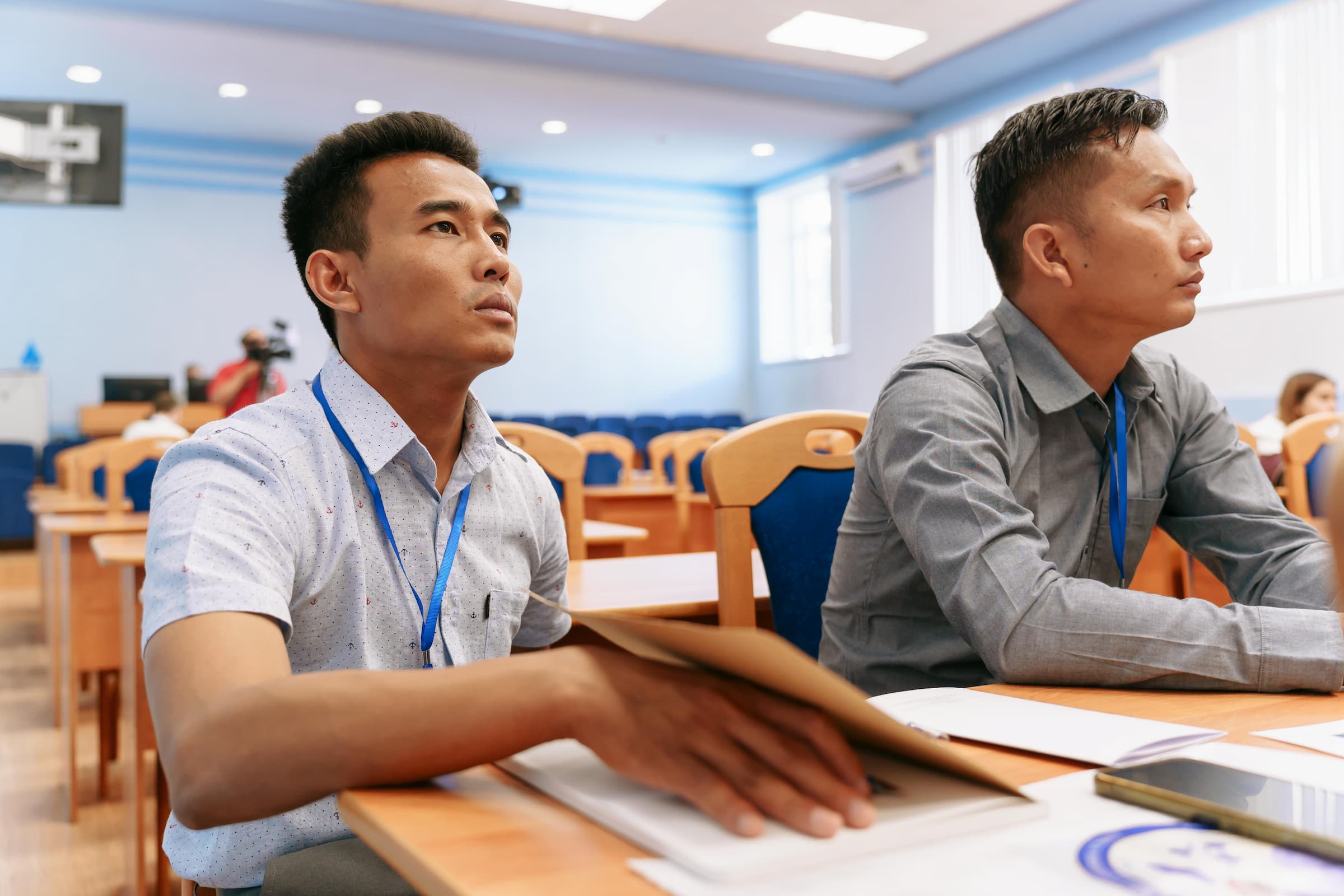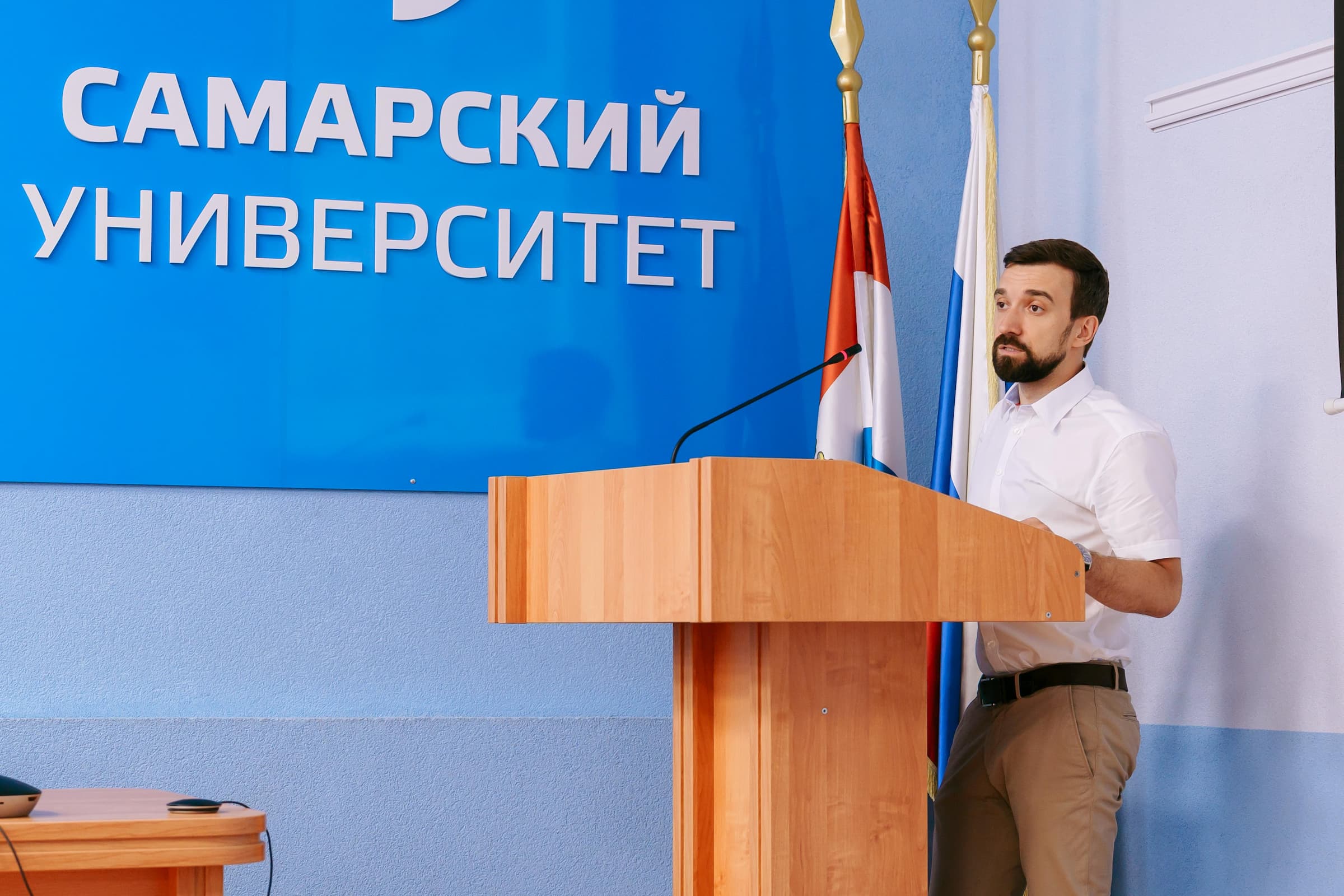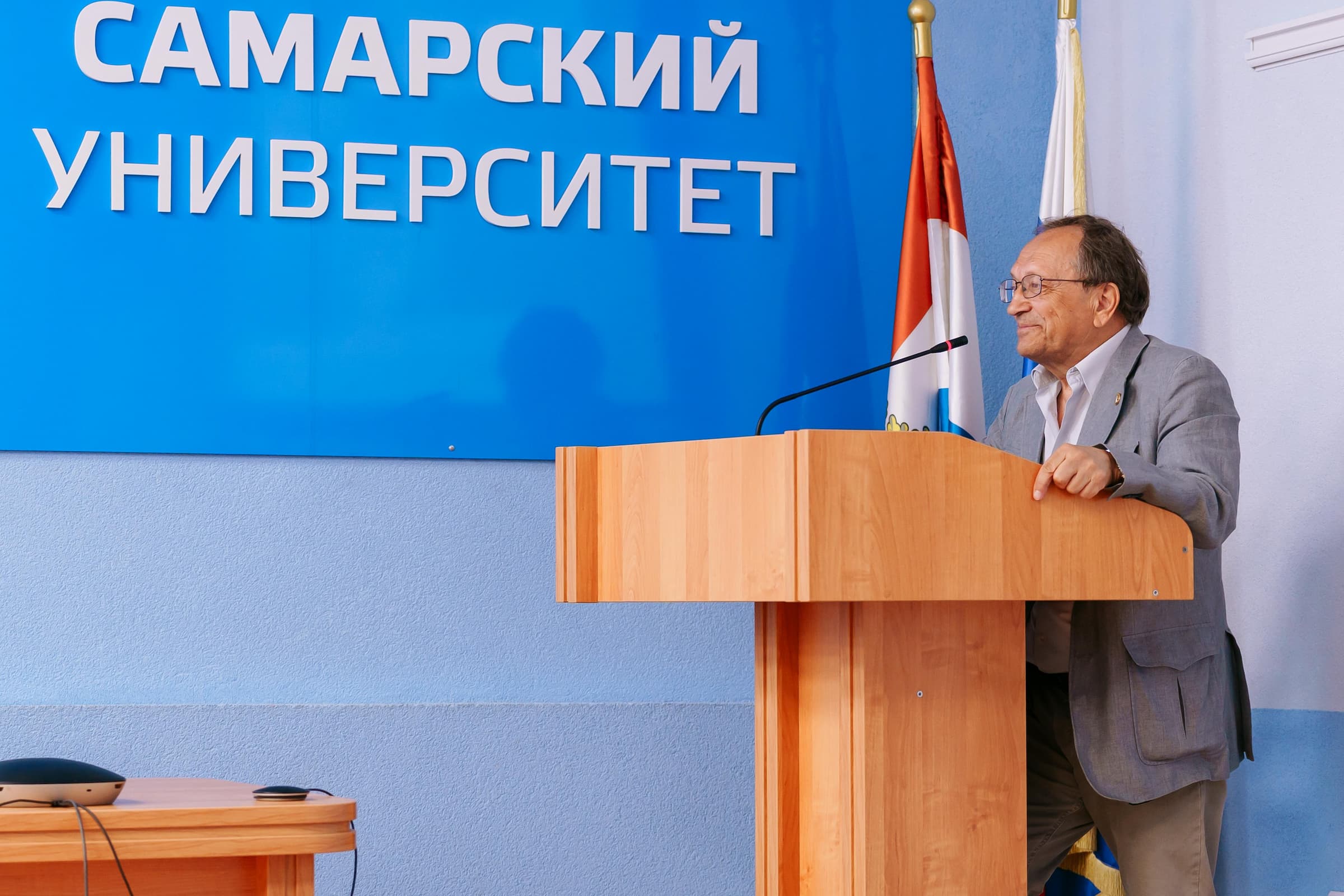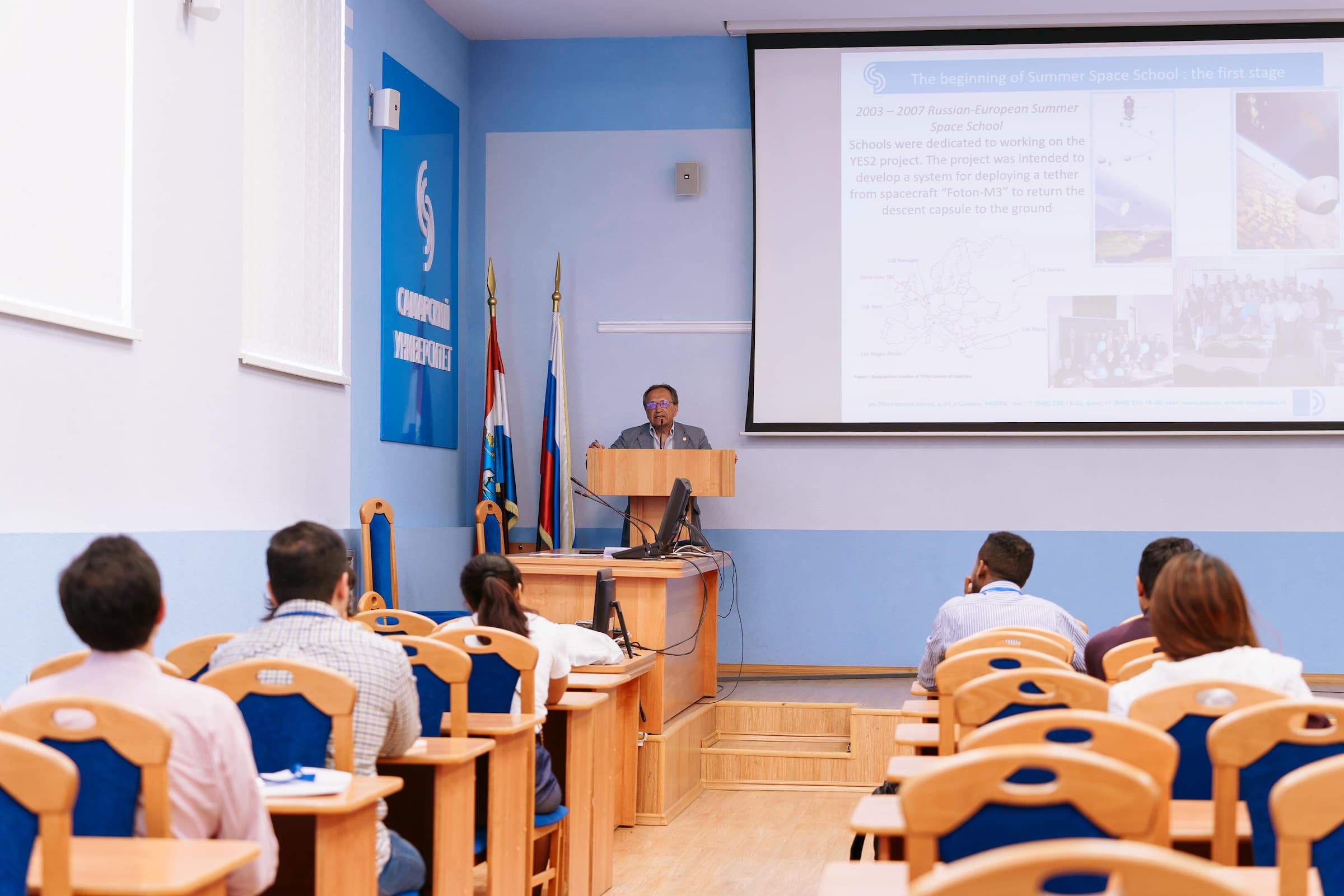On Monday, June 17, the 18th International Summer Space School Advanced Space Technologies and Experiments in Outer Space opened at Samara University. The School participants are international students from six countries. They will listen to the set of lectures delivered by leading scientists, and engage in practical projects, for example, one concerning the capacity to use nanosatellites for tracking emergence of hurricanes and other similar natural disasters over the oceans, which are dangerous for vessels. This year, the School curriculum fully reflects the global trend that has been steadily developing in international cosmonautics in recent years: small nanosatellites gradually grow in size and take on more and more useful functions to be previously performed by their large ‘brethren’. Nanosatellites are now even able to take tiny femtosatellites, with their size of a tennis ball, on board and send them to explore density of the upper atmosphere.
This year, 19 international students from six countries take part in the School: Bolivia, Brazil, Mexico, Myanmar, Peru, and Ethiopia. During the previous Summer Space School, 23 students from 6 countries came to Samara to study: they were students of various universities, as well as young scientists and engineers from Mexico, Bolivia, Colombia, Costa Rica, Ecuador, Peru, and two students of the Moscow Aviation Institute, who are citizens of the Republic of Korea.
“This year, the geography of participants in the International Summer Space School has changed a little: Myanmar has added to the traditionally participating countries. A large team came from this country. This is due to the circumstance that in 2023, at Samara University, a group of engineers from the Myanmar Space Centre studied during nine months. We developed educational courses in compliance with the standards of the UN Committee on the Use of Outer Space, and, following the results of this successful training, new representatives of Myanmar came to Samara,” told us Igor Belokonov, Professor of Samara University’s Inter-University Department of Space Research.
The participants in the Space School will have practical classes to be held on the basis of the Nanosatellite Flight Control Centre, the Nanosatellite Testing Centre, and the Centre for Nanosatellite Technologies of the University’s Inter-University Department of Space Research. In the second week, the focus will be shifted to the team project work. Having divided into teams, the School students will study and analyze two projects of scientific missions of nanosatellites.
“In course of the project work, we will invite the School participants to choose two scientific missions of nanosatellites: these are promising projects based no longer on the usual three-unit cubesats, but on six-unit nanosatellites, to the use of which Samara University’s Inter-University Department of Space Research moves. This is the trend of our team: we have already mastered three-unit cubesats and shift onto more complex tasks. All over the world, six-unit cubesats have already been competing with three-unit ones, and 12-unit nanosatellites are ‘knocking on the door’,” explained Igor Belokonov.
The first mission will be related to designing a six-unit cubesat with the bistatic radar function. Using bistatic radar makes it possible to improve quality of detecting low-contrast radar targets. Such a spacecraft can be applied to monitor emergence of natural disasters in the oceans, for example, hurricanes.
“Another mission is a traditional one, and meets the School participants’ main wished: it is the design and analysis of a six-unit spacecraft intended for the Earth remote sensing in the optical range. We plan that in future, on the basis of this work, our partners will continue cooperating with us on development and creation of such a spacecraft,” explained Igor Belokonov.
The third mission is related to creating a grouping of very small spherical femtosatellites (satellites weighing less than 100 g), designed for studying density of the upper layers of the Earth’s atmosphere. By their braking, it is possible to detect the atmosphere density in the altitude range, in which satellites fly. “The six-unit cubesat will become a carrier device for the grouping of such ‘babies’, which increases the information content of the experiment,” added Igor Belokonov.
At the end of the International Summer Space School, the teams will defend their nanosatellite projects in front of the commission of experts.
Over two weeks in Samara, the School participants will listen to lectures by leading scientists from Samara University, as well as Space Research Institute of the Russian Academy of Sciences, M. V. Keldysh Institute of Applied Mathematics of the Russian Academy of Sciences, and Belarusian State University, which developed two nanosatellites and launched them into orbit.
The cultural program is also provided for: foreign students and engineers will get acquainted with the regional capital’s sights, visit the Samara Space Museum, tour the K. G. Sakharov Park Complex of the History of Technology in Tolyatti, take a boat trip along the Volga.
For Reference:
The International Summer Space School Advanced Space Technologies and Experiments in Outer Space is organized by Samara University with the aim of developing international cooperation and creating the unified educational space in the field of advanced space technologies. The School has been held since 2003, over which time it has become a powerful educational project allowing talented young people from various parts of the world to gain new knowledge and competencies in the field of space technologies and participate in the international teams’ project work. Over the years, more than 500 young people from 45 countries trained at the School.
The School is supported by the Volga Region Branch of K. E. Tsiolkovsky Russian Academy of Cosmonautics, as well as the International Astronautical Federation (IAF), in which Samara University is a member.
A unit means a size-unit of nanosatellites of the “cubesat” type, which is a ‘cube’ with dimensions of 10x10x10 cm. A three-unit cubesat consists of three such ‘cubes’ connected to each other, a six-unit one consists of six ‘cubes’.
